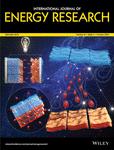Effect of CH4-H2 mixture on the combustion characteristics in a stabilized swirl burner
Summary
This article presents a numerical study of hydrogen enriched natural gas swirl flames. This later is of great importance nowadays considering its role as a combustion enhancer, when mixed in appropriate amounts; it improves the reactivity of gas, increases the flammability range, and thus results in more stable combustion. Moreover, it tends to decrease the emissions of CO. The predictions of turbulent isothermal and reacting swirling flows have been simulated using the Reynolds Averaged Navier-stokes (RANS) method. To model the turbulence-chemistry interaction, the finite-rate eddy dissipation (FR-ED) model has been used. The hydrogen percentage in the mixture varied from 0% to 100%. The numerical solutions are validated by comparison with corresponding experimental data (Combustion Laboratory, University of Milan). The results obtained show a good agreement between numerical and experimental results, and demonstrated that the RNG k-ɛ turbulence model presents a good prediction. In general, the velocity profile is well represented by our model. The RNG k-ɛ model consistently demonstrated superiority. In the combustion regime, the Re-Normalisation Group (RNG) k-ɛ model results demonstrate strong agreement with experimental measurements.




